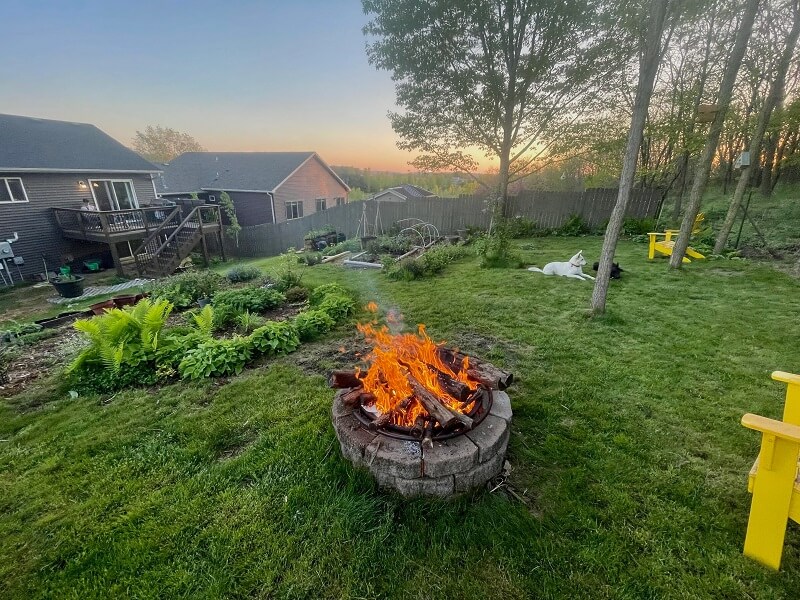A homeowner has shared their incredible journey to rid their garden of wooded overgrowth, becoming an expert in native landscaping in the process.
Posting to Reddit, they shared photos of their newly cleared garden in the r/gardening subreddit. The treeline is now tamed and spaced out, giving the Redditor's flower beds ample access to sunlight.

Also installed, but not shown in the pictures, are a 70-foot curbside pollinator garden and a six-by-30-foot rain garden.
The Redditor started hacking at the overgrowth in 2019 when an illness left them with time off from work.
They spent the next three summers wielding a machete against invasives, such as the black locust tree.
To ensure that they upgraded their garden in a sustainable way, they researched native and invasive species as well as drainage, soil, and mole management.
Sadly, their efforts against the invasive trees incurred the wrath of their neighbor. To protect their privacy, the homeowner planted some willow — which grew 15 feet within just one year.
"Whatever your reasons and inspirations, after going through four machetes and 20 pairs of gloves, I'm so grateful for the lush, flowering, veggie producing oasis," they wrote.
The Redditor's efforts are a good example of mindful, sustainable gardening, which prioritizes the health of the land and local wildlife.
Installing native plants (which in the U.S. might include natural lawn replacements like buffalo grass, desert flowers such as the California poppy, or prairie grasses and wildflowers, including coneflowers) means planting species already adapted to the surrounding landscape.
As a result, native plants require less water to survive, which brings valuable cost savings for homeowners on water bills.
It also helps municipalities cut domestic water use — something that is particularly pertinent in states like Oregon, where the average homeowner uses 50% of their water outside, and in Utah, where residents can claim $3 per square foot of lawn that they replace with water-wise landscaping.
The rain garden that the Redditor has installed is a nice touch too. Rain gardens help to divert run-off from rainwater to stop it from saturating the ground and causing flooding.
🗣️ Would you buy juice or yogurt made with bruised or misshapen fruit?
🔘 If I couldn't tell the difference 🤔
🔘 If it were cheaper 💰
🔘 If it were healthier 🍎
🔘 I'd never buy it 🚫
🗳️ Click your choice to see results and speak your mind
Rain gardens can be paired with deep-rooted native plants, which prevent soil erosion and absorb excess water from the soil.
Adding these additional plants will also give your garden's biodiversity a boost, supporting valuable pollinators like bees, bats, and butterflies with a bountiful habitat.
"Looks beautiful!" one Redditor wrote. "I'm reclaiming about 10 feet of woodland myself and started last year, so know how much work this is. Kudos!"
"It's so gorgeous," another added. "You're going to be enjoying that for years to come."
Join our free newsletter for easy tips to save more, waste less, and help yourself while helping the planet.









